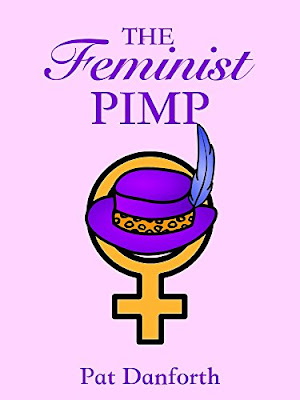The President of the United States of America is dating a twelve-year-old.
Reluctantly, I reread the article again. My eyes cannot be pried away:
Dolly Carruthers bounces buoyantly upon the saddle of Dandy as he slows to a canter, approaching the presidential stables at Camp David. The President financed the expansion of these stables as a birthday present for Dolly. Dandy was also a gift from the President, their first anniversary.
With Dandy nestled contentedly in his capacious stable space, Dolly adeptly climbs down and ties him in place, her pale green eyes rapt, pink tongue-tip peeking out from between her lips. Rosy-cheeked, hers is a wide-eyed, gamin countenance. In an instant, her shoulders sag.
“I miss him already,” she says. “But it is nice to get some peace and quiet for a change.”
While Dolly relaxes at Camp David, the President is off in Mexico City, renegotiating with President Nieto over Mexico’s one-side backdoor tariff. This weekend has been a much-needed reprieve for Little Dolly, who has been swept up in a media firestorm since she and the President first went public with their relationship. In spite of the initial criticism, Dolly has stayed faithfully at the President’s side, traveling with him to all domestic appearances.
I permit myself a few seconds reprieve from the prose. I look to the picture displayed on the page facing the text, Dolly staring through the camera. Inlaid within is a small picture, the First Family inside the White House, First Lady and First Daughter on the President’s left side, First Nymphet on his right, bulb of her bare shoulder in his tiny palm. The women’s smiles make it seem as if their teeth are trying to climb out of their mouths.
Her long, lovably gangly legs, clad in immaculate white breeches and suede half-chaps, carry her down the paved path to the guesthouse in what seems like only a few steps. In spite of her ranginess, Dolly bears a surprising grace well beyond her years. She removes her riding helmet circumspectly, steadying the short brim between her fingers and tilting her head downward, letting her flaxen hair spill out over her shoulders.
“It’s just all been so stressful,” she says, sinking down onto a bench, settling into a splay more jejune than unladylike. “I want to just hide away sometimes. But it’s like the President always tells me, ‘Dolores, you can’t just fall asleep on us.’”
While the President may refer to her by her full name, her adoring fandom will always know Dolores Carruthers by her sugary sobriquet. America has fallen in love with Little Dolly. Her Twitter account has attracted over ten million followers, and at least one major network has proposed a reality show set in the President’s Manhattan headquarters. Paparazzi were held in thrall by the possibility—proven false though it was—of a baby bump. Playboy has even tendered the idea of a pictorial—non-nude, to be sure. America’s sweetheart is humble about her fame.
“I’m just happy that I can make other people happy.”
Dolly is not without her detractors, though. There are, of course, small sections of the far left that are less than enthused with the President’s relationship, if not with Dolly herself. Radical conspiracy theories abound, including the preposterous imagining that Dolly hails originally from Tijuana, having been kidnapped by Secret Service operatives at the President’s command. While some have demanded an investigation, and even called for charges to be pressed against the President, the White House has larger concerns.
“The President is very invested in this nation’s youth,” one White House publicist has gone on record as saying. “He cares very much about relating to them. And if it helps him do his job more effectively, what’s the harm in love?”
Dolly seems to have won over far more than she has offended. The President’s approval ratings have actually skyrocketed since Dolly entered the public eye, and early polls suggest the Democrats will have their work cut out for them come 2020. Many Americans have softened their position on the once-polarizing President. Dolly, it seems, has won their hearts. She has turned America’s collective frown upside down, offering us all a much-needed break from Kim Jung-un’s bottomless nuclear overtones and Putin’s persistent march through Crimea.
Inset within the text is a photograph of Vladimir Putin shaking hands with the President, the Russian autocrat tilting his thin smile and dozy gaze toward Dolly. It is a fundamentally Russo-American moment. Nabokov must be groping himself in his grave.
And as for Dolly’s opinion on her overnight fame, she remains optimistic.
“He’s done so much for me, I can’t understand why anyone would be so negative. All they have is their simple criticisms. They don’t understand how complicated this world actually is.”
These wise words are no surprise. Dolly is exceedingly mature for her age. Taking this into account, her private tutors have accelerated her studies. So while most American kids are on summer vacation, Dolly is currently working through a tenth grade curriculum. Camp David has given her a rare chance to kick back for a weekend, outside of the limelight.
“It’s all about stress relief,” Dolly offers. “For me and for him.”
And maybe, just maybe, Dolly has relieved some stress for America, too.
I let the magazine fall back down to the kitchen table. I cannot read it again, but I know I will. I roll it into a tube, stuff it into my khakis so no one else in the house can find it. There’s no point in hiding it; the online version went viral overnight. Everyone in the house will read it, I suppose, and I will too. I will read it again, yes, because I was the person who was supposed to have written it.
I got the job at Sampson Magazine eleven years ago, when I was a struggling freelancer with a newborn baby and an almost useless master’s degree in journalism. Desperate for a job, I managed to put together a journalistic essay on sex selection and female infanticide in India based on my graduate fieldwork, and Sampson accepted it. The article received good feedback, and Sampson offered me a full-time position at an unstinting salary. It was my dream job. Sure, the articles were generally apolitical, but the pay was good. For eleven years, it helped support my wife and my daughter, keeping us in a comfortable upper eastside apartment, keeping savings in our bank account.
And then Dolly showed up.
It seemed like everyone loved her except me. The President’s girlfriend is pre-pubescent and yet she becomes America’s sweetheart overnight. Every news channel, every newspaper, every website and every surviving print magazine does an affectionate story about her. And of course Sampson had to as well, securing a rare one-on-one interview with her at Camp David, outside of the President’s paternal gaze. My editor said she wanted the best. She came to me. I said no without even having to think about it. When my editor pressured me, I resigned.
I wanted to write a tell-all. In those frantic, puzzling days that followed, I pitched such a piece to a number of other magazines. They all said no. They wanted Dolly qua Dolly. I considered a blog post in protest. My lawyer advised me against it. The Dolly interview ended up going to an NYU grad, fresh out of journalism school. Her minor, I heard, had been women’s studies.
It gets to the point where you wonder if it’s worth carrying on. You wonder if it’s worth bringing someone into the world now, a confirmed nine billion people and not eight, as the statisticians had for so long insisted on the basis of their projections. Is it moral to reproduce anymore? Is it moral to bring anything into this world? These thoughts have seized me again and again since I left my job.
I start into a slow shuffle up the stairs, my destination the master bedroom. There in the bed I see my daughter. She lies with my wife curled around her, their sleeping breaths synchronized, their exhalations gentle. They are women and the world will eat them. If I try to protect them, I have come to accept, I am not an ally.
We will have to leave Manhattan now. Our savings are not so deep that we can continue to live here without two incomes, especially with my wife soon to be on leave. We will have to look to other places now, less overpriced, the kinds of cities and towns where people consume magazines like Sampson for articles like the one about Dolly, places populated by people who vote Republican with ferocity or Democrat with indifference. But I have to protect my daughter, my wife. Chauvinist though it may sound, that certainty tolls within me.
Between them, a swell grows in my wife’s stomach. She went for the sonogram just this morning, but we still have not talked about the result.
I’m afraid to ask, and I suspect she’s afraid to tell.
***
“Little Miss America” appeared in Republican Party Massacre, a privately-circulated samizdat from early 2017 featuring Trump stories. This collection was originally intended to be published, but co-editor Charles Norwood and I got too scared of Trump’s legal team to follow through. Other stories of mine from that samizdat did receive publication in real-life collections, including “The Hills Have Votes” in HellBound Books’ Schlock! Horror! and “Commando-in-Chief” (with Norwood) in Econoclash Review’s Trump Fiction.











